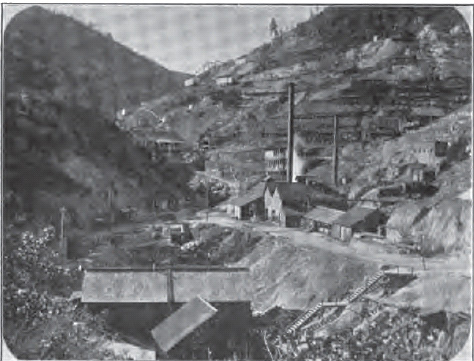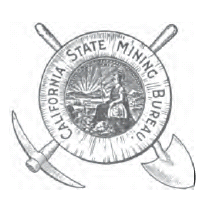Christ statue and worship at Iron Mountain.
AMD&CSI and IMMI research and develop nano-catalysts and superconductors and high technology applications of hazardous waste materials from sludge.
AMD&CSI and IMMI plan zinc/air battery/fuel cell production from hazardous wastes. OEM partners are invited to join Iron Mountain laboratories! Estimates are that Iron Mountain holds over 20,000 tons of aluminum oxides and 10,000 tons of zinc oxides as hazardous wastes and over 1 million tons of zinc in proven and probable ore reserves.
University of California Davis Professor Ting Guo discovers Iron nano-catalysts (Fe-Al-Ni) catalyst for Fischer-Tropsch reaction and converts carbon dioxide from air to carbon nano-tubes.
"One thing Fe is relatively good at is catalyzing Fischer-Tropsch synthesis of liquid fuels from syngas (CO + H2), which happens at 300 C or so. It is possible that we can convert your iron into materials good for catalyzing FTS, which can be used after methane and CO2 are converted to syngas using Ni catalysts at 900 C. We need to test to see if the iron catalysts from your waste is good for this purpose. Mixing them with carbon paste is an option. Because the reaction temperature is relatively low, we may not need to use nanotubes to anchor the catalysts. " Ting Guo, November 21, 2008
AMD&CSI and IMMI propose manufacturing magnetic refrigeration from hazardous wastes.
AMD&CSI and IMMI propose to develop 137 units of safe and affordable fire and earthquake resistant housing from hazardous waste recycling.
AMD&CSI and IMMI propose superconducting power grid and solar powered magnetic-levitation trains from Iron and Arsenic hazardous wastes! Solar panels from cadmium and rice straw silica wastes! Catalysts from sludge! Emission free power! Protection of inland valleys from inundation with new levies to keep back the sea! Recommission mothball fleet as wind power fleet.
AMD&CSI and Iron Mountain Mines, Inc. announce emergency plan to remove hazardous wastes including cadmium from the environment.
EPCRA 313, The Community Right to Know Act. Why cadmium?
Plan for restoring fish habitat. Biology of Iron Mountain to be used to extract cadmium into AMD in copper belt and treated at Iron Mountain. AMD&CSI and IMMI propose to build "Bridge to Future" from hazardous waste.
United States project to eliminate carbon emissions, convert transportation to solar electric and hydrogen fuel cell, Iron Mountain Mines, Inc. proposes to supply catalysts and materials.
Car runs on straw, transportation comes full circle! Fuel cell provides better emissions than horses.
AMD&CSI and IMMI warn everybody about dangers of cadmium in the human body. Proposal to build solar panels from cadmium until resource and waste is disposed of and accounted for.
Solar panels on every roof.
Soliciting bids for construction of world's largest car, truck, and solar panel plant!
http://www.atsdr.cdc.gov/csem/cadmium/
http://www.canoshweb.org/odp/html/cadmium.htm
http://www.osha.gov/SLTC/cadmium/index.html
http://www.atsdr.cdc.gov/toxprofiles/tp5.html
Cadmium is bio-accumulative, and cadmium is found at Iron Mountain Mines.
Assays of proven ore reserves at Iron Mountain Mines indicate recoverable reserves of over 200 tons of cadmium and 200 tons of tellurium.
Over 30 tons of cadmium may be disposed by the EPA in the sludge pits at Iron Mountain Mines.
Iron Mountain proposes to move to San Francisco and dam the Golden Gate.
Recommended study of tsunami in San Francisco Bay. Environmental Catastrophe and what to do about it. Dangers of economic collapse.
Essential Solutions, Inc. to construct state-of-the-art fertilizer plant to help farmers feed the world with nutrients and minerals from Iron Mountain Mines. (manufacturer of Ag-Gel, www.ag-gel.com)
Ag-gel is a cadmium free fertilizer.
Miracle at Iron Mountain Mine. T.W. Arman proclaims Iron Mountain Act of God; seeks protection to save the fish.
AMD&CSI and IMMI propose to recycle all copper, zinc, and cadmium waste in California. When it rains, it pours.
T.W. Arman announces world's largest solar panel factory to be located in Redding area. The AMD&CSI and IMMI solar panel plant and fuel facility have pledged up to $100 million for habitat restoration for Salmon and Trout.
Iron Mountain Mines discloses errors of impunity and miscarriage of justice.
Iron Mountain convention to consider the future of the Salmon and Trout and of Iron Mountain Mines and the Shasta copper belt with the Inter-lakes recreation area, including the general public, the City of Redding, the County of Shasta, State and Federal agencies, the University of California, and the Wintu Tribe.
Iron Mountain Mine Natural Resource Trustee Council raises contribution from $2.2 million to $6.5 million for habitat restoration for Salmon and Trout! Thank you trustees!
Iron Mountain Mines announces plans for a Research Institute for the study of mine biology. Iron Mountain is already the most studied habitat of mine flora on the planet, thanks to the work of researchers led by Dr. Jill Banfield, professor of biology at the University of California, Berkeley.
"Our plans for bioremediation and biomining require a thorough understanding of the microbes that inhabit the ore and we intend to provide the researchers here with the best facilities in the world" says T.W. Arman, President of Iron Mountain Mines, Inc., "we want to provide facilities where this research can be for the benefit of everybody, not just for some mining company, so this facility will be an academic facility were the researchers are free to pursue their studies " Mr. Arman told the students and Dr. Banfield.
"This is really exciting" said Professor Banfield," We are now in our second generation of scientists at U.C. Berkeley studying the micro-organisms at Iron Mountain, this research facility will allow us to take our research that much further".

Picture of Iron Mountain Mine taken at the turn of the last century, (about 1903, courtesy of the California State Mining Bureau).
The cleanup and maintenance of the Iron Mountain Mine Superfund site is funded entirely by private funds contributed through a consent decree settlement in December, 2000.
No public resources or tax dollars are required to pay for the Operations and Maintenance of the EPA Superfund Site at Iron Mountain Mines
Future Vision
T.W. Arman and Iron Mountain Mines, Inc.(IMMI) have entered into a joint venture with Artesian Mineral Development & Consolidated Sludge, Inc.(AMD&CSI) to develop the metal and mineral resources of the Acid Mine Drainage (AMD) and the High Density Sludge (HDS) produced by the AMD treatment using bioremediation (biomining).
The joint venture has submitted a proposal for ROD 6 to undertake bioprocessing and biomining (insitu biomining) as a final remedial action under EPA Superfund law (CERCLA).
The draft proposed ROD 6 submitted 6-02-2008
There is currently approximately 500,000 tons of HDS disposed upon the Brick Flat mine, for which the technology is now available to beneficially recover the metal and mineral content, and to recycle the gypsum and other materials to beneficial uses.
There is currently approximately 270,000 tons of heavy metal laden mixed lime/ dredging sludge disposed in the toxic pit nearby the Matheson reservoir. The technology is now available to beneficially recover the metal and mineral content, and to close this hazardous waste toxic pit landfill.
Between 150 and 250 million gallons of rainwater flow through Iron Mountain each year, and emerge as acid mine drainage. Bioremediation technologies are now in production at many mining sites around the world, facilitating the beneficial recovery of valuable metals, vastly reducing or eliminating the accumulation of hazardous waste toxic metal sludge, and providing cleaner water for discharge into the environment than antiquated technologies such as the EPA's lime/ gypsum/ sludge treatment plant at Iron Mountain Mine.
T.W. Arman has owned Iron Mountain since 1976.
Iron Mountain Mines, Inc.was formed in 1976 when T.W. Arman purchased Iron Mountain Mine from Stauffer Chemical Co. There are 36 patented mining claims on approximately 4400 acres zoned for mining. Iron Mountain was the 10th largest copper mine in the world and the largest in California.
On July 28, 2008, Iron Mountain Mines, Inc. transmitted the following letter to President Bush:
The Honorable George W. Bush, President of the United States of America
Dear Mr. President,
I am corresponding to you again concerning my property known as Iron Mountain Mines, Inc., located in Shasta County , California .
I am again seeking your executive authority to resolve the status of my liability for “unrecovered past response costs” that the EPA claims justify their liens against my properties.
I believe that you should provide this administrative order because:
(A) I am not a contributor to the hazardous substances at my facility or the toxic affects of the hazardous substances found at my facility, and
(B) I am the owner of the real property on which the facility is located and I did not conduct or permit the generation, transportation, storage, treatment, or disposal of any hazardous substance at the facility; and I did not contribute to the release or threat of release of a hazardous substance at the facility through any action or omission.
I believe I have not received a fair deal from the EPA, and I have persevered in proclaiming my innocence and my entitlement to the innocent land owner defense despite the incredible hardship that I have had to endure for the last 22 years protesting the allegation that I have contributed to or caused the pollution that is the subject of this Superfund site.
I was denied the innocent landowner defense of 9601 (35) (A) (i) in a partial summary judgment proceeding in October of 2002 that incorrectly alleges that the innocent landowner defense is unavailable to me. The EPA stated to the Court that “This defense, however, is only available to PRPs who, at the time of purchase, “did not know, or had no reason to know that any hazardous substance which is the subject of the release or threatened release is disposed of on, in, or at the facility.” The EPA then incorrectly states that “Because IMMI purchased the property with knowledge of – indeed, at least in part, because of – the presence of hazardous materials, the innocent landowner defense is not available to IMMI.
I try to be understanding about how these things get confusing after all these years, and I hope that this was simply an error and was not perpetrated out of malice or ill will, and I can certainly understand how the Court would defer to the experts at the EPA in determining such matters, however, the fact is that when I purchased the property in October of 1976 Copper, Cadmium, and Zinc were not considered “hazardous substances” in storm water run-off. This determination did not occur until July, 1977 of the following year, when the Congress Transportation Subcommittee approved new regulations for the Clean Water Act regulating these metals in storm run-off as “hazardous substances”. Indeed, the Copper in the storm drainage, or Acid Mine Drainage as it is now called, was represented as a valuable asset by the sellers of the property to me at the time, and whatever they knew about pending legislation or other environmental matters they concealed from me (as was latter proven by the EPA and DOJ counsel when they subpoenaed the seller's records), and after the purchase the principle occupation of my company along with the sales of mine tailings was operating the cementation plant, which recovered the Copper from the drainage before it got to the river.
Mr. Pedri of the Central Valley Regional Water Quality Control Board (CVRWQCB) met with me when I was purchasing the property and informed me that it was important to the State of California that I should operate the Copper cementation plants to help keep the river clean, and I assured him that it was my intention to do so, but at the time I had no idea that soon the State would be fining me millions of dollars because of the storm water run-off.
After the State issued their NPDES permit things got bad really fast, and I was getting fined thousands and thousands of dollars for an operation using ancient equipment that wasn't even really profitable to begin with, and very soon I felt like I had become a slave or some kind of indentured servant to the State of California, and eventually I just couldn't keep up with the costs of the work plus the fines and the legal fees.
The EPA also alleged that I did not “exercise due care” concerning the “hazardous substances”. This is also unfair because I kept the cementation plants working the best I could, and any failures of the old equipment, the faulty work of employees, the delivery of improper materials, or other failures was beyond my control.
In fact the Administrative Record of Superfund shows that the State knew the equipment I inherited when I bought the property was not up to the job of adequately removing the “hazardous substances” from the drainage since before I acquired the property, and that the State had been considering providing adequate equipment long before the EPA got involved. The EPA further claims that I violated State and EPA orders concerning the Site, but fails to clarify that those orders required the expenditure of over $200 million dollars in equipment and operational costs, and that I told them from the very beginning that I could not afford to perform the work they were ordering me to do.
I recently read an EPA web page that refers to the Iron Mountain Mines Superfund site, which the EPA published back in 2000, entitled the “Superfund 20 th Anniversary Report”.
The link is: http://www.epa.gov/superfund/20years/ch4pg12.htm
Making the Program Faster, Fairer, and More Efficient (Continued)
Resolving Disputes Outside of Court
Some of the most complex and contested cases can be settled using an outside mediator -- allowing all the parties to spend their time and resources cleaning up sites rather than litigating cases in court.
For example, at the Landfill & Resource Recovery site in Rhode Island , the parties included 18 PRPs, along with the United States and the State of Rhode Island . Both the Federal and State claims were resolved with the help of a Federal district court judge with a settlement that reimbursed the government for 97 percent of its expected costs. The mediated settlement also provided funds to purchase wetlands to expand the Blackstone River Valley National Heritage Center .
At the Auburn Road Landfill site in New Hampshire , a voluntary mediation led to a consent decree that resolved the government's claims against 31 PRPs. The settlers agreed to perform the remedy and to reimburse the United States for its past cleanup costs and future oversight costs. In addition, the settlers are reimbursing the State of New Hampshire and the Town of Londonderry for past cleanup costs and future oversight costs.
Protecting the "Little Guy"
Some Superfund sites have hundreds of PRPs, including small companies (or even individuals) who have contributed only a minor portion of the waste. These small contributors may be dragged into burdensome litigation by the PRPs which were primarily responsible for the contamination. EPA attempts to identify and resolve the liability of these small party contributors early in the process, leading to de micromis and de minimis settlements.
A de micromis party is someone whose contribution of waste is minimal. In fact, the costs of hiring a lawyer, and negotiating a settlement, would dwarf any amount the party could reasonably be expected to contribute to cleanup costs. Many times, the PRPs who contributed a major portion of the waste to a site sue the de micromis parties for contribution. EPA enters into a de micromis settlement with these parties to protect them from such suits.
For example, 47 homeowners who lived around the Raymark Industries site in Connecticut could be seen as de micromis parties since they only contributed household wastes to the site. EPA and the State of Connecticut protected these homeowners from being sued by entering into a settlement where each homeowner paid $1 to be protected from "third party" law suits brought by the major contributors.
A de minimis party has contributed more waste than a de micromis party, but the amount is still insignificant when compared with what has been contributed by some of the major PRPs -- for example, less than 1 percent of the waste at a site. With de minimis parties, EPA has placed a priority on achieving a quick, efficient resolution of their liability to protect them from burdensome litigation.
At the Tulalip Landfill in Washington , EPA settled with 207 de minimis parties very early in the process, resulting in the recovery of approximately $10 million and the identification of PRPs who made major contributions of waste to the site. At the Cherokee Oil Resources site in North Carolina , EPA entered into an early de minimis settlement with over 200 small contributors. Both the de minimis and the major contributors agreed not to sue over 1,000 de micromis parties.
EPA gets the "little guys out" of the Superfund enforcement. Over the years, 460 de minimis settlements have been reached with nearly 23,000 small waste contributors.
$1 Billion Settlement Reached Redding, California (October 19, 2000) -- The United States and the State of California announced a settlement today with Aventis Crop Sciences USA, Inc. to fund future cleanup costs that could approach $1 billion at the Iron Mountain Mine site . The settlement is one of the largest to be reached with a single private party in the history of the Superfund Program. The agreement will ensure long-term control of more than 95 percent of the releases from the site. This 4,400-acre site, which operated from the 1860s through 1963, is historically the largest point source of toxic metals in the country, and the source of the most acidic mine drainage in the world. Prior to remediation, the mine discharged an average of a ton of toxic metals a day into the Upper Sacramento River, a critical salmon spawning habitat and central feature in the State's water system. Approximately 70,000 people used surface water within 3 miles of the site as their source of drinking water. In 1983, EPA listed the site on the NPL at the State's request. Since then, numerous Federal and State agencies have worked together on this site which has been addressed in six stages starting with a series of emergency actions. In 1994, a high density sludge treatment plant was installed that removes 99.99 percent of metals from the site's toxic runoff. The settlement pays for natural resource restoration projects, provides for operation and maintenance for 30 years, and guarantees additional funding for site costs incurred after the year 2030. |
|
It seems somewhat ironic to me that the EPA is touting how they are “ Resolving Disputes Outside of Court” and “ Protecting the "Little Guy"” proclaiming the benefits of de micromis and de minimis settlements and apparently claiming that their dealings with Iron Mountain Mines is a good example of this.
Once again I respectfully submit that I am entitled to an innocent land owner defense.
The EPA treatment program has resulted so far in the accumulation of some 460,000 tons of toxic and hazardous sludge upon my property, and since the EPA apparently plans to continue making this sludge for another 3000 years, I am also asking for your assistance pursuant to Executive Order No. 13352, 42 U.S.C. 6901 et seq (a)(4), (b)(1 thru 8), and (c)(1 thru 3), and 6902 et seq (a)(1 thru 11) and (b), and 9622 (a), (b)(1 thru 4) to help me to correct this problem.
This is the fifth letter I have transmitted to you this year, and each reply has been from counsel for the EPA. I am wondering if you are even receiving these correspondences.
I am also seeking your assistance in promoting “cooperative conservation”, as provided for in your Executive Order No. 13352, and in accordance with the purposes expressed therein.
As used in this order, the term ``cooperative conservation'' means actions that relate to use, enhancement, and enjoyment of natural resources, protection of the environment, or both, and that involve collaborative activity among Federal, State, local, and tribal governments, private for-profit and nonprofit institutions, other nongovernmental entities and individuals.The last reply to my request, dated May 1, 2008, and signed by Kathleen Salyer , Chief of the Site Cleanup Branch of Region IX of the EPA, states that “businesses and individuals are not eligible for EPA technical assistance under the provisions of 6913 of RCRA.”
Clearly my request has been entirely misunderstood, as I believe that it is the EPA that is in need of assistance under the provisions of 6913 of RCRA.
I provide for your convenience the relevant text of 6901 of the Solid Waste Act.
b) Environment and health The Congress finds with respect to the environment and health, that-- (1) although land is too valuable a national resource to be needlessly polluted by discarded materials, most solid waste is disposed of on land in open dumps and sanitary landfills; (2) disposal of solid waste and hazardous waste in or on the land without careful planning and management can present a danger to human health and the environment; (3) as a result of the Clean Air Act [42 U.S.C. 7401 et seq.], the Water Pollution Control Act [33 U.S.C. 1251 et seq.], and other Federal and State laws respecting public health and the environment, greater amounts of solid waste (in the form of sludge and other pollution treatment residues) have been created. Similarly, inadequate and environmentally unsound practices for the disposal or use of solid waste have created greater amounts of air and water pollution and other problems for the environment and for health; (4) open dumping is particularly harmful to health, contaminates drinking water from underground and surface supplies, and pollutes the air and the land; (5) the placement of inadequate controls on hazardous waste management will result in substantial risks to human health and the environment; (6) if hazardous waste management is improperly performed in the first instance, corrective action is likely to be expensive, complex, and time consuming; (7) certain classes of land disposal facilities are not capable of assuring long-term containment of certain hazardous wastes, and to avoid substantial risk to human health and the environment, reliance on land disposal should be minimized or eliminated, and land disposal, particularly landfill and surface impoundment, should be the least favored method for managing hazardous wastes; and (8) alternatives to existing methods of land disposal must be developed since many of the cities in the United States will be running out of suitable solid waste disposal sites within five years unless immediate action is taken. (c) Materials The Congress finds with respect to materials, that-- (1) millions of tons of recoverable material which could be used are needlessly buried each year; (2) methods are available to separate usable materials from solid waste; and (3) the recovery and conservation of such materials can reduce the dependence of the United States on foreign resources and reduce the deficit in its balance of payments. (d) Energy The Congress finds with respect to energy, that-- (1) solid waste represents a potential source of solid fuel, oil, or gas that can be converted into energy; (2) the need exists to develop alternative energy sources for public and private consumption in order to reduce our dependence on such sources as petroleum products, natural gas, nuclear and hydroelectric generation; and (3) technology exists to produce usable energy from solid waste. Since the EPA is administering the cleanup of the Acid Mine Drainage under the provisions of CERCLA, it is therefore a federal activity, as described in your Executive Order No. 13352. “Sec. 3. Federal Activities. To carry out the purpose of this order, the Secretaries of the Interior, Agriculture, Commerce, and Defense and the Administrator of the Environmental Protection Agency shall, to the extent permitted by law and subject to the availability of appropriations and in coordination with each other as appropriate: (a) carry out the programs, projects, and activities of the agency that they respectively head that implement laws relating to the environment and natural resources in a manner that: (i) facilitates cooperative conservation; (ii) takes appropriate account of and respects the interests of persons with ownership or other legally recognized interests in land and other natural resources; (iii) properly accommodates local participation in Federal decisionmaking; and (iv) provides that the programs, projects, and activities are consistent with protecting public health and safety; (b) report annually to the Chairman of the Council on Environmental Quality on actions taken to implement this order; and (c) provide funding to the Office of Environmental Quality Management Fund (42 U.S.C. 4375) for the Conference for which section 4 of this order provides.”
As Iron Mountain Mines, Inc. is a private for-profit organization, and Iron Mountain Mines, Inc. has ownership and other legally recognized interests in land and other natural resources, I believe I am entitled to the benefit of these provisions, and deserve to have the EPA take and show “appropriate account of and respects the interests of persons with ownership or other legally recognized interests in land and other natural resources.”
I offer these further observations:
Since the EPA undertook cleanup of Iron Mountain Mines, Inc. under the provisions of CERCLA and my designation on the National Priority List (NPL) in 1983, a great deal of research has been conducted by private, government, and academic experts.
It is now recognized and understood that the cause of the Acid Mine Drainage is due to the activity of a biological community of micro-organisms inhabiting the rock formations underground, and that these bacterium have shown us their remarkable ability to extract from the earth with ease those very metals which miners have struggled and toiled to extract for the benefit of mankind.
Industry has quickly recognized this talent, and now employs these biological communities to great advantage in the economical extraction of minerals.
Similarly it has been shown, and is now being commercially implemented, that biological communities of micro-organisms can be employed to remedy the Acid Mine Drainage, and remove metal contaminants from water resources before entering the waterways of the United States more effectively and economically, and in more environmentally sound ways, than the conventional chemical methods.
These biological processes and their commercial adaptation in the form of biotechnology or “bio-mining”, offer the potential to transform what is presently regarded as an environmental disaster by the EPA, (by last account the EPA reported that AMD remediation would cost $72 billion dollars) into a manageable problem
In light of the new understanding of the biological processes involved in the formation of Acid Mine Drainage and its consequent effect upon the environment, we would like to offer a suggestion for a reinterpretation by the EPA of the legislation that currently regulates AMD.
Pursuant to the provisions of CERCLA, the Comprehensive Environmental Response, Compensation, and Liability Act, and the definitions contained therein, that henceforth AMD should be recognized as an “Act of God”, because it is a “natural phenomenon of an exceptional, inevitable, and irresistible character, the effects of which could not have been prevented or avoided by the exercise of due care or foresight.” Also we would suggest that mines do not fit within the description of a “facility”, which requires that a site is: “any site or area where a hazardous substance has been deposited, stored, disposed of, or placed.” In as much as the presence of any “hazardous substance” that is a naturally occurring element whose source is located in the earth must necessarily be acknowledged as an “Act of God” for such an expression to have any meaning, and since no person is responsible for it having been “deposited, stored, disposed of, or placed”, it should therefore be understood that persons may no longer be blamed for AMD, and the “cooperative conservation” of such resources may proceed without the acrimonious litigation and waste which has heretofore been the hallmark of this debate.
We offer our vision of a permanent solution to this problem which will benefit all of society, the environment, and promote the economical recovery of valuable minerals in accordance with public law and private property rights in a sustainable way.
Thank You for your consideration of this matter,
Very Best Regards,
T.W. (Ted) Arman Date: July 27, 2008
President, Iron Mountain Mines, Inc.

T.W. Arman on the Brick Flat mine near the summit of Iron Mountain
T.W. Arman is Chairman, CEO, and President of Iron Mountain Mines, Inc. and its' single stockholder.
Since 1976, T.W. Arman and Iron Mountain Mines, Inc., and their trusts, have owned approximately 2800 acres of Real Property and 37 mining claims in the vicinity of Iron Mountain, which is mining property for the development of commercial products from mining, timber, and related products located in the City of Redding, Shasta County, California.
The proposed statue and the IMMI development plan
Ore Reserves
Using the results of assays and information developed during drilling, drifting and mining of the various segments of the Iron Mountain ore body, geological ore reserves were developed for both the massive sulfide and disseminated ores by Mountain Copper Company. Reserves of the gossan ore were developed through the cooperation between engineers of Mountain Copper Company and Stauffer Chemical Company. Subsequent checks of these reserve figures have been made by Southwestern Engineering Company and Iron Mountain Mines, Inc. In addition, various Mountain Copper Company internal checks are evident. The result of the calculations and checks is the general agreement that there presently exists at Iron Mountain Mine roughly 12,000,000 tons of proven sulfide ore with minimum average grades of 1% copper, 2% zinc, 0.02 gold and 1.5 oz. silver. Probable gossan ore is estimated at 3,000,000 tons. The combined proven geological reserves amount to 15,050,000 tons of proven sulfide and gossan ore contained within an area of roughly 300 acres. These reserves represent tonnages presently remaining in the Hornet, Mattil, Richmond Extension and the unmined Brick Flat ore bodies. No recent reserve figures have been developed for the three magnetite bodies. Remaining in place tonnages for the Old Mine, Number 8, Confidence-Complex, Camden , busy Bee, Lone Star and Okosh massive sulfide bodies are listed in various data and reports received from Iron Mountain Mines. However, no reserve calculations for these deposits are available as backup. Limited backup assay data are available for the Camden and Okosh bodies. According to this information average copper grades for the Camden and Okosh are 1.01 percent and 3.43 percent respectively. No overall averages are readily available for the Old Mine, Number 8 and Confidence-Complex but general extension of adjacent data indicates average grades may approach one percent.
Tons of proven sulfide ore in place: 14,183,000; probable reserves 1,050,000
Tons of proven gossan in place 3,050,000; probable reserves 3,795,000
Grand Total in place 17,233,000; probable reserves 4,845,000
During 1950 and 1951, a 1,798 exploration drill hole was put down by the U.S.G.S. in the vicinity of a syncline on the southeast side of the Iron Mountain mine. Located at the approximate mine coordinates 2900 north, 3650 east passed through numerous rhyolite intervals of Balaklala formation throughout its entire length. Intermittent, broad to narrow bands of disseminated sulfides were present throughout the drill hole with some intervals containing slightly greater than one percent copper. Kaiser Engineers, 1981
Cautionary Disclosure: This is "forward-looking information about prospective results of operations, financial position or cash flows that is based on assumptions about future economic conditions and courses of action and that is not presented in the format of a historical balance sheet, income statement or cash flow statement ." Examples of financial outlooks include expected revenues, net income, earnings per share and R&D spending. Material facts have not been verified. Actual results may vary. These results are highly speculative. Readers should establish their own reasonable basis for these assumptions.
T.W. Arman
|
original immi insitu mining proposal.pdf with comments from the EPA review. #54056 (the 50th entry) of the EPA administrative record, 1986 Record of Decision, ROD 1 "Any proposed solution to the acid mine drainage problems of Shasta County must contain the assurance, through a carefully thought-out strategy, that the consequences of the cure will not be worse than the present predicament." (From the preface of the Doctor of Philosophy thesis and dissertation of Darrel Kirk Nordstrom, March 1977, to the Department of Earth Sciences and the Committee on Graduate Studies of Stanford University, item # 54009 (the third entry) of the Adminstrative Record of the Iron Mountain Mine Superfund site, EPA October 1986 Record of Decision.) Darrel Kirk Nordstrom dissertation 1977.pdf consent decree with statement of work and insurance policies.pdf FOIA request ."Eritis insuperabiles, si fueritis inseparabiles. Explosum est illud diverbium: Divide, & impera, cum radix & vertex imperii in obedientium consensus rata sunt." [You would be insuperable if you were inseparable. This proverb, Divide and rule, has been rejected, since the root and the summit of authority are confirmed by the consent of the subjects. AMD&CSI and IMMI request DOJ appointment of Special Counsel Marzulla Law. Agreement to request for status conference |



